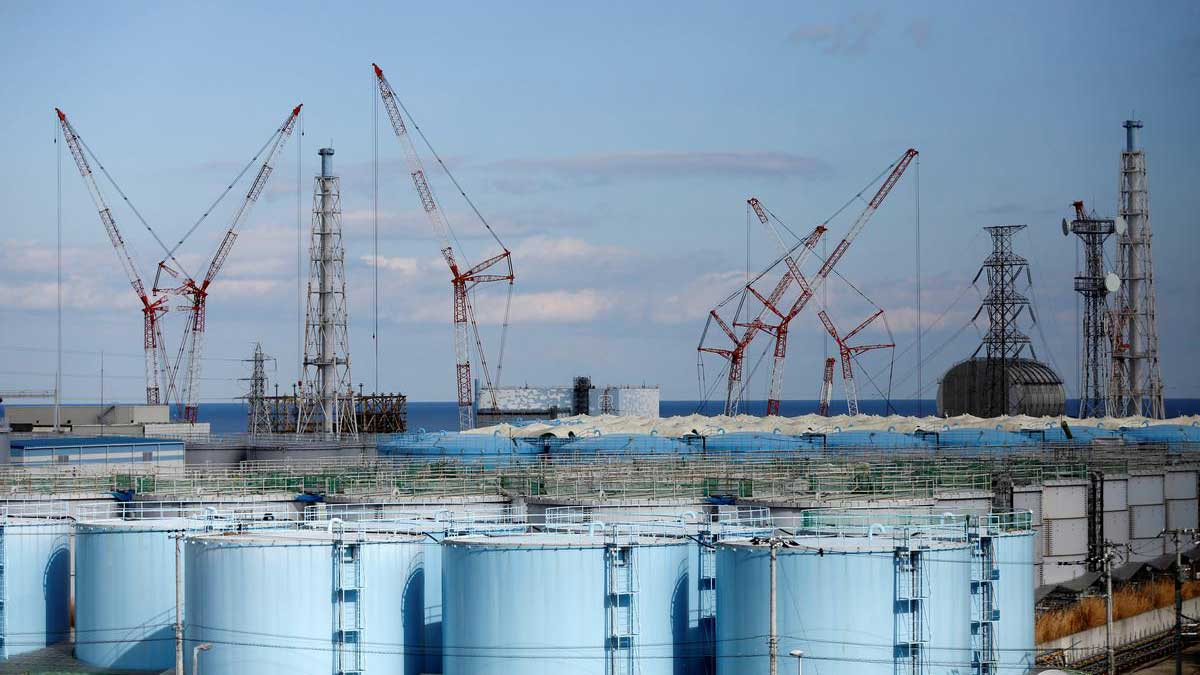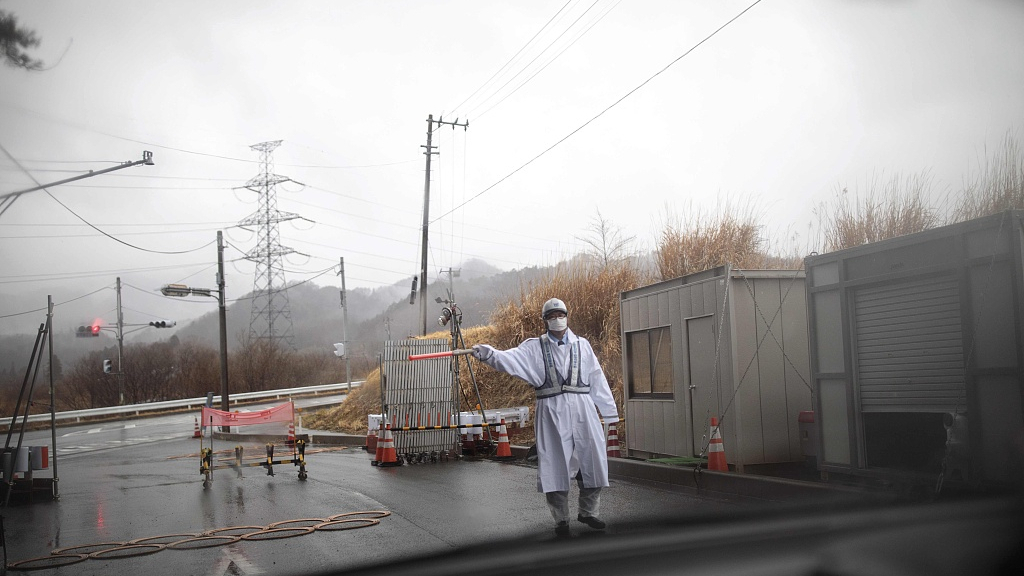
Reactor units are seen over storage tanks for radioactive water at the Tokyo Electric Power Co.'s (TEPCO) tsunami-crippled Fukushima Daiichi nuclear power plant in Okuma Town, Fukushima Prefecture, Japan, February 18, 2019. /Reuters
Reactor units are seen over storage tanks for radioactive water at the Tokyo Electric Power Co.'s (TEPCO) tsunami-crippled Fukushima Daiichi nuclear power plant in Okuma Town, Fukushima Prefecture, Japan, February 18, 2019. /Reuters
Editor's note: Freddie Reidy is a freelance writer based in London. He studied history and history of art at the University of Kent, Canterbury, specializing in Russian history and international politics. The article reflects the author's opinions and not necessarily the views of CGTN.
On March 11, 2011, Japan experienced a three-fold disaster which shocked the nation and indeed, the world. A devastating M9.0 earthquake shifted the nation's main island 1.5 meters East, triggering a tsunami that would lead to the meltdown of three reactors at the Fukushima Daiichi nuclear power plant.
Ten years on, the legacy of the disaster lives long in the public consciousness. The disaster also prompted an emergency review of nuclear energy policy in Japan and across the globe at a time where nations are striving to cut carbon emissions.
Known in Japan as the Tōhoku earthquake, the combined effect of the disasters left 22,000 dead and 122,000 homes destroyed. As the scale of the nuclear disaster became apparent, 160,000 fled Fukushima's surrounding prefectures. Today, a 337km exclusion zone is still in place.
Rebuilding communities and livelihoods has been a long-term struggle. The national government has spent 30 trillion yen ($280 billion) on redevelopment with a further 1.6 trillion yen ($14.72 billion) allocated for 2021-2025. Symbolically, Miyagi prefecture will also be the starting point for the Olympic Flame, ahead of the rescheduled Summer Games.
The initiatives may help to ease the national sentiment, but on a local level, there is persistent skepticism, as Sakurai Katsunobu, mayor of Minamisoma in 2011 told The Economist: "Who is this infrastructure actually being built for? People's hearts and spirits are not recovering, they're being lost even more."
The combined effect of Japan's post-1945 urbanization, as well as fears over returning to the area surrounding Fukushima has stunted an accelerated recovery. A point Koichi Shiba, a local business owner made to Nikkei Asia. In his hometown of Namie, only 1,100 of the original 21,000 have returned. "No one wants to come back as they built homes and got used to new lives elsewhere over the years."
Tao Yoichi of the Reconstruction of Fukushima agency adds, "The radiation effects are not visible, but I hope you can see how deeply it is felt." In Namie, the Reconstruction Agency revealed that 54.5 percent of the original population have stated they will not return.
As well as opportunities offered in nearby cities and the fear of radiation, the Fukushima disaster also led to a severe loss of faith in the safety of the industry, as well as nuclear technology in general.
While Japan has embarked on a painful process of collective healing and renewal, that sense of distrust, particularly in large energy corporations such as plant owner TEPCO, remains entrenched.
These themes are explored in the just-released "Fukushima 50" motion picture starring Ken Watanabe, as he leads a team of 50 heroic plant employees in their fight to avert a disaster of even greater proportions. The heroism of the employees is juxtaposed with the TEPCO management whose intransigence threatens the safety of millions.

A guard at a checkpoint exit from the exclusion zone of Futaba Town, Fukushima, March 5, 2018. /VCG
A guard at a checkpoint exit from the exclusion zone of Futaba Town, Fukushima, March 5, 2018. /VCG
The actions of TEPCO executives portrayed in the film are symptomatic of a wider ill in Japan's business culture, where a rigid hierarchy and an adherence to strict protocols suffocates innovation and suppresses voices which ought to be heard.
Reflecting on the disaster, then-Prime Minister Naoto Kan stated, "I had supposed Japanese engineers were very high quality. I thought it was unlikely that human error could cause an accident in Japan. My thinking has changed 180 degrees."
In the aftermath of the disaster, Japan's nuclear power stations were taken offline, pending safety checks. To this day, only four are in operation. The sudden drop in nuclear energy led to an increased reliance on natural gas and coal consumption. However, such a shift is incompatible with Japan's target of carbon neutrality by 2050.
The impact of the disaster was also felt in Germany, as political pressure prompted a move away from nuclear energy. This, in turn, has caused issues for Germany itself, with an increased reliance on the controversial Nord Stream 2 gas pipeline from Russia.
Japan's renewable production has though, increased from 9.5 percent before the disaster, to 18 percent in 2019. Japanese Prime Minister Yoshihide Suga vowed in January that "renewable energy will be introduced to the greatest possible extent."
The shift to carbon neutrality does appear to necessitate a reliance, in part, on nuclear energy. "Zero carbon by 2050 means we need nuclear," claimed Toyoda Masakazu, chairman of Japan's Energy Institute of Economics.
Prominent climate campaigner Muto Ruiko was resolute in her opposition to this viewpoint, "we shouldn't have to choose between climate disaster and nuclear disaster."
With common opposition to the construction of new nuclear facilities, and just nine of the existing facilities being approved for re-opening, a proliferation of nuclear energy seems unlikely.
However, enormous energy demands, and stringent climate objectives will require Japan to reconcile risk and economic performance, with the long-term battle against climate change. A judgement which will have to be made with memory of 2011 fresh in the national conscience.
(If you want to contribute and have specific expertise, please contact us at opinions@cgtn.com.)

